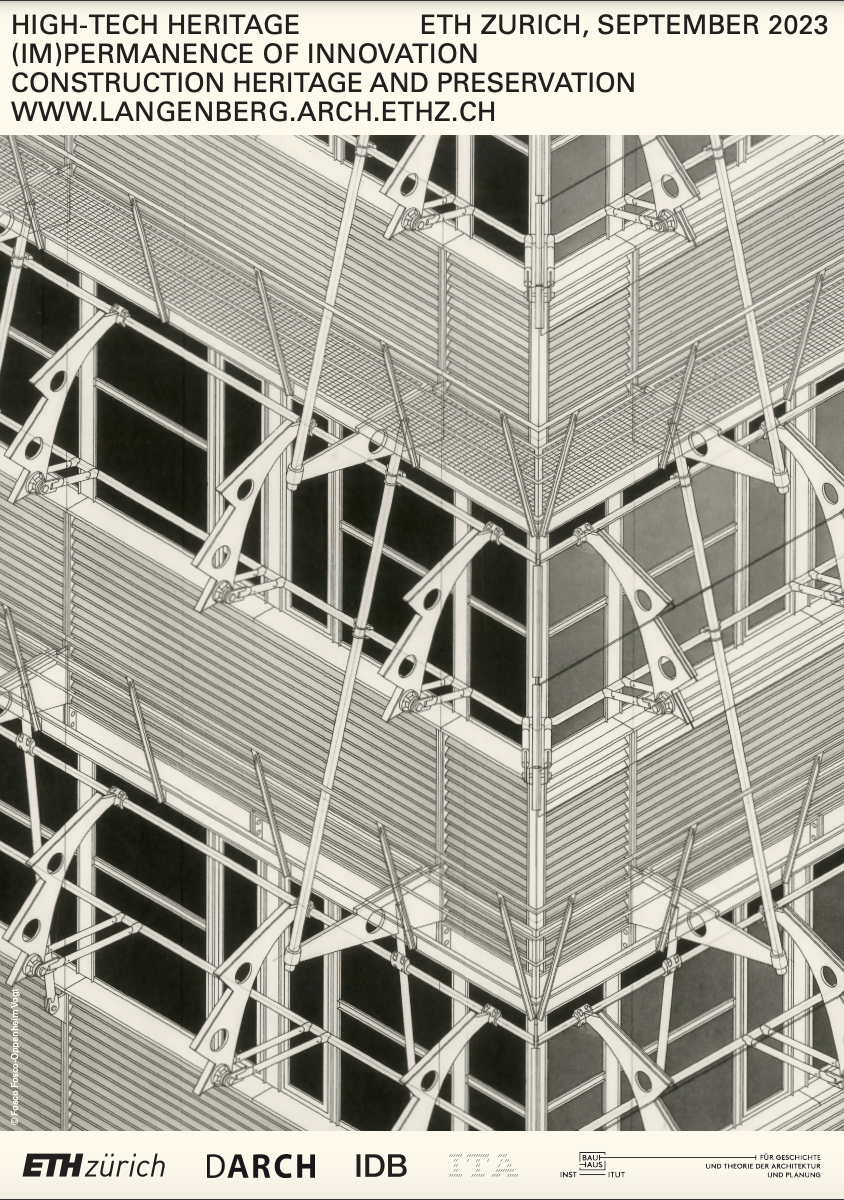
A conference collaboratively organized by the Professorship for Construction Heritage and Preservation, ETH Zurich (Prof. Dr. Silke Langenberg) and the Professorship for Heritage Conservation and Architectural History, Bauhaus University Weimar (Prof. Dr. Hans-Rudolf Meier).
The recent conference Heritage Postmodernism. Preservation of an “Unfinished” Epoch in Weimar has not only facilitated the discussion on the preservation of the architectural heritage of postmodern architec- ture but also initiated a debate on High-Tech Architecture – a movement that emerged around the same time with postmodernism, demonstrating the need for further exploration of this topic. This conference will provide a platform for an in-depth discussion on the forthcoming theoretical and practical challenges asso-
ciated with the preservation of the buildings of this movement.
The conference organizers believe that it is necessary to reassess the buildings associated with High-Tech Architecture from the perspective of preservation. In addition to the more obvious postmodern building stock, buildings that are characterized by innovative facades and supporting structures play a particularly important role in dealing with the construction heritage of the 1980s. Collectively referred to as “High-Tech Architecture”, the design concepts of these objects aim at using and displaying advanced technology. The rapid obsolescence of technical innovations compared to the average lifespan of a High-Tech building results in the complete
replacement of components instead of their repair. This raises the question of an appropriate conservation approach to High-Tech Architecture.
Why is it necessary to initiate a discussion about the listing of these relatively young buildings now? Countless examples of post-war, but now also post-modern architecture show that waiting too long and postponing their listing results in major losses of original building substance. In the case of High-Tech Architecture, novel and experimental technological features lead to even shorter renewal cycles; despite the machine aesthetics of the facades which make some objects appear quite young. The current discussion regarding the preservation of one of the most renowned objects, the Center Georges Pompidou in Paris, offers an insight into the challenges of preserving High-Tech Architecture: The art museum was already closed in 1997 for renovation work. Only after 20 years, this iconic building is expected to close again for several years for renovations starting in 2024.
The conference organizers look forward to receiving abstracts for papers (max. 3.500 characters) and posters (max. 2.000 char acters) in either English or German with a short curriculum vitae. Conference languages are English and German.
Submission deadline: 31 October 2022
Notifications for accepted presentations will be sent in the following two months.
More information can be found here.
